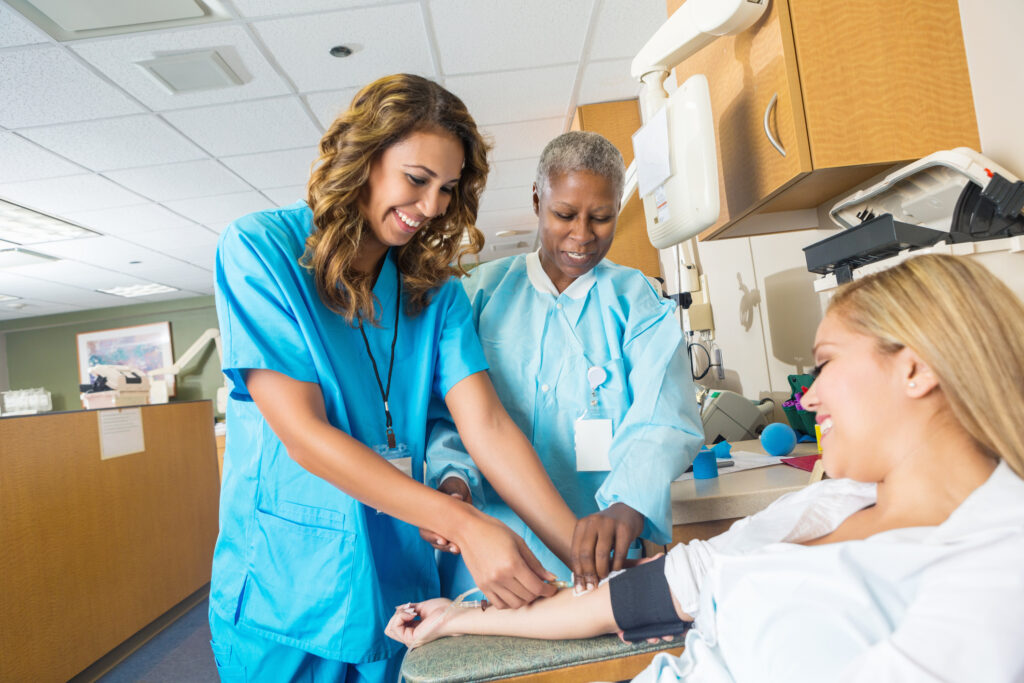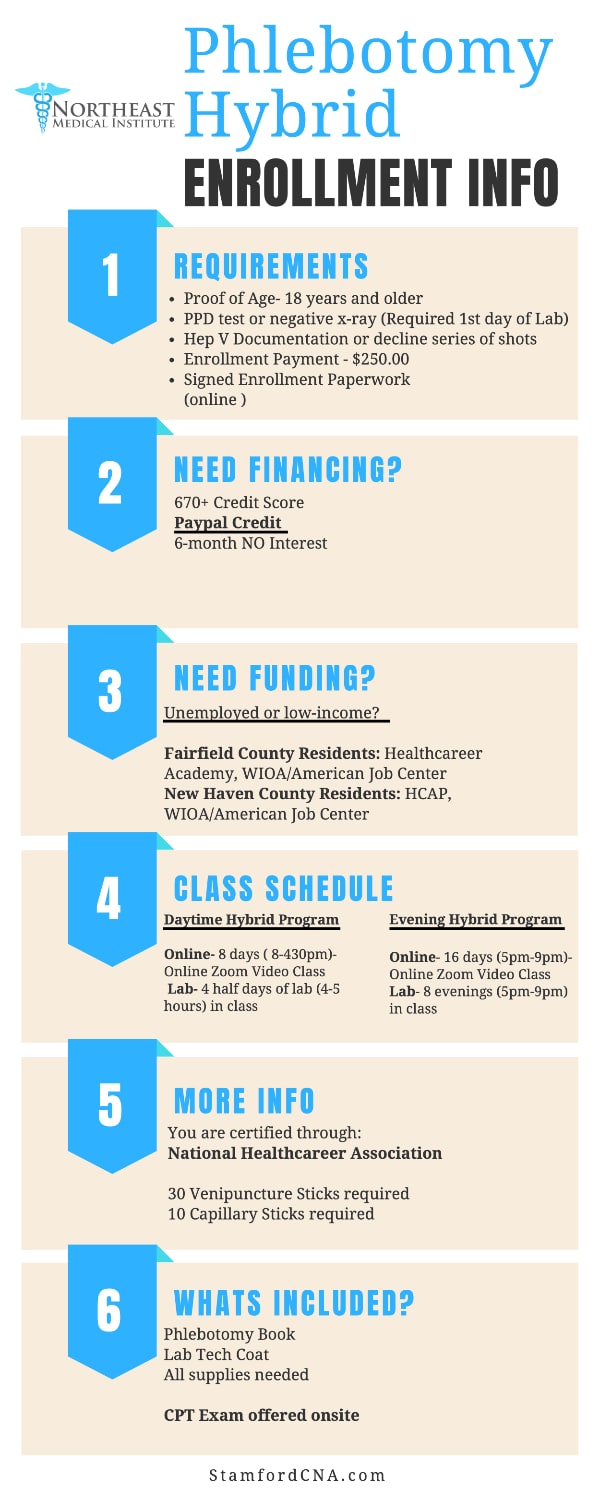Rumored Buzz on Northeast Medical Institute - New Haven Campus Phlebotomy Course & Cna Class
Rumored Buzz on Northeast Medical Institute - New Haven Campus Phlebotomy Course & Cna Class
Blog Article
Northeast Medical Institute - New Haven Campus Phlebotomy Course & Cna Class Things To Know Before You Buy
Table of ContentsThe Definitive Guide to Northeast Medical Institute - New Haven Campus Phlebotomy Course & Cna ClassMore About Northeast Medical Institute - New Haven Campus Phlebotomy Course & Cna Class5 Easy Facts About Northeast Medical Institute - New Haven Campus Phlebotomy Course & Cna Class ExplainedThe Main Principles Of Northeast Medical Institute - New Haven Campus Phlebotomy Course & Cna Class The Main Principles Of Northeast Medical Institute - New Haven Campus Phlebotomy Course & Cna Class What Does Northeast Medical Institute - New Haven Campus Phlebotomy Course & Cna Class Do?
The usage of such gadgets should be accompanied by other infection prevention and control practices, and training in their usage. Not all security devices apply to phlebotomy. Before selecting a safety-engineered gadget, users must completely check out offered gadgets to identify their appropriate usage, compatibility with existing phlebotomy methods, and effectiveness in protecting personnel and patients (12, 33).For setups with low sources, expense is a motoring variable in purchase of safety-engineered gadgets. Where safety-engineered tools are not readily available, skilled use of a needle and syringe is acceptable.
labelling); transport problems; analysis of outcomes for medical monitoring. In an outpatient division or center, give a specialized phlebotomy cubicle containing: a tidy surface area with 2 chairs (one for the phlebotomist and the other for the individual); a hand laundry basin with soap, running water and paper towels; alcohol hand rub. In the blood-sampling space for an outpatient division or center, provide a comfortable reclining sofa with an arm rest.
Getting My Northeast Medical Institute - New Haven Campus Phlebotomy Course & Cna Class To Work
Ensure that the signs for blood tasting are clearly defined, either in a written method or in documented directions (e.g. in a laboratory type). At all times, adhere to the approaches for infection prevention and control listed in Table 2.2. Infection avoidance and control methods. Collect all the devices needed for the treatment and area it within risk-free and simple reach on a tray or trolley, making certain that all the items are plainly visible.
Introduce on your own to the person, and ask the client to mention their full name. Inspect that the lab type matches the person's identity (i.e. match the individual's details with the research laboratory type, to make sure precise recognition).
Make the individual comfortable in a supine position (if possible). The individual has a right to refuse an examination at any kind of time before the blood tasting, so it is crucial to make certain that the patient has comprehended the procedure - PCT Classes.
The Facts About Northeast Medical Institute - New Haven Campus Phlebotomy Course & Cna Class Revealed
Expand the patient's arm and examine the antecubital fossa or lower arm. Locate a capillary of a great dimension that shows up, straight and clear. The representation in Area 2.3, reveals common positions of the vessels, yet numerous variations are possible. The median cubital vein lies between muscles and is usually the most easy to pierce.
DO NOT place the needle where blood vessels are diverting, due to the fact that this boosts the possibility of a haematoma. The blood vessel must show up without applying the tourniquet. Locating the vein will help in determining the correct size of needle. Apply the tourniquet concerning 45 finger widths above the venepuncture site and re-examine the blood vessel.
Haemolysis, contamination and existence of intravenous fluid and medicine can all alter the outcomes (39. Nursing staff and doctors might access central venous lines for specimens adhering to methods. Samplings from central lines lug a risk of contamination or erroneous lab test outcomes. It serves, however not excellent, to attract blood specimens when first presenting an in-dwelling venous tool, prior to attaching the cannula to the intravenous fluids.
The Only Guide to Northeast Medical Institute - New Haven Campus Phlebotomy Course & Cna Class
Failing to permit enough contact time enhances the risk of contamination. DO NOT touch the cleaned site; in specific, DO NOT position a finger over the vein to guide the shaft of the exposed needle.
Ask the patient to form a hand so the blood vessels are extra popular. Go into the blood vessel promptly at a 30 level angle or much less, and remain to introduce the needle along the capillary at the simplest angle of entrance - Phlebotomy Courses. As soon as adequate blood has been collected, release the tourniquet prior to taking out the needle
Northeast Medical Institute - New Haven Campus Phlebotomy Course & Cna Class for Dummies
Take out the needle carefully and apply gentle stress to the site with a tidy gauze or completely dry cotton-wool round. Ask the individual to hold the gauze or cotton wool in position, with the arm expanded and increased. Ask the individual NOT to bend the arm, because doing so causes a site web haematoma.

Things about Northeast Medical Institute - New Haven Campus Phlebotomy Course & Cna Class
Do not press the syringe bettor due to the fact that additional pressure raises the threat of haemolysis. Where feasible, maintain the tubes in a shelf and relocate the shelf in the direction of you. Inject downwards into the suitable coloured stopper. DO NOT get rid of the stopper because it will certainly launch the vacuum. If the sample tube does not have a rubber stopper, inject exceptionally slowly into the tube as reducing the stress and speed used to transfer the sampling decreases the danger of haemolysis.

Report this page